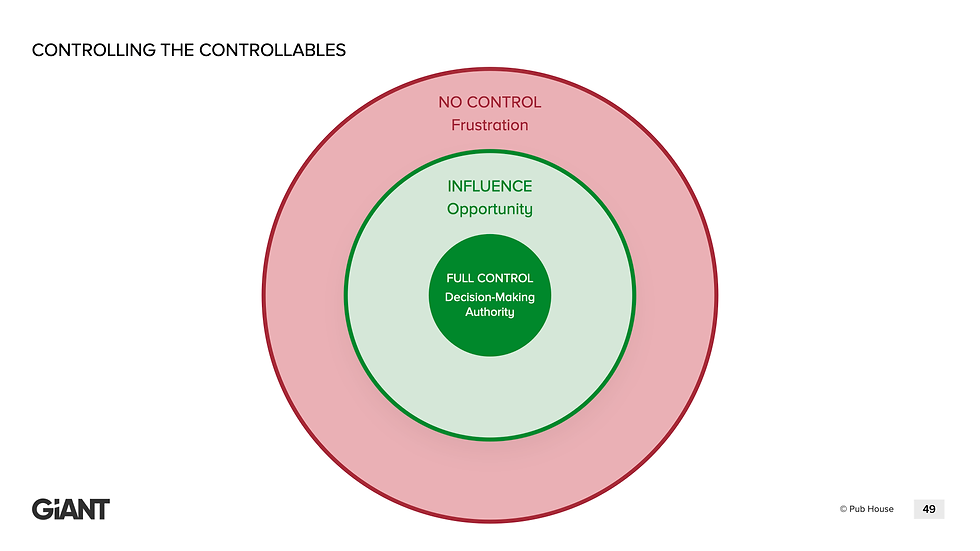Lead From Peace, Not Pressure
- Heath Haynes
- Oct 14
- 3 min read
What if the most powerful shift in your leadership didn’t come from a strategy, a new hire, or a budget increase—but from learning to lead from peace instead of pressure?
I remember coaching a leader who looked great on the outside*: sharp, driven, and respected by her peers. But she confessed that each day felt like a sprint she couldn’t stop running. "I just can’t turn it off," she said. "Even when I'm winning, I feel behind."
She wasn’t lazy. She wasn’t unskilled. She was simply leading from pressure instead of peace. And that inner pressure was leaking out into her team.
We all do it.
When we ignore what’s going on inside of us, we end up leading from insecurity, anxiety, or fear. That never multiplies healthy influence. At best, it maintains short-term productivity. At worst, it burns people out—including us.
That’s why we teach leaders to use a simple but profound diagnostic tool: The Peace Index.
The Peace Index: A Leadership Vital Sign

The Peace Index helps you evaluate five core areas that directly impact your leadership presence: People, Purpose, Place, Personal Health, and Provision. Each area can be rated from 0 to 100. When your peace is high, you lead with clarity, strength, and calm. When it's low, pressure takes the driver’s seat.
Here’s a quick breakdown:
People – Do you have the key relationships you desire and are they life-giving or draining?
Purpose – Do you feel a sense of meaning in your work and/or life?
Place – Are your environments energizing or depleting? (Home, neighborhoos, city, office)
Personal Health – How are you doing physically, emotionally, and mentally?
Provision – Are your financial and material needs met sustainably?
Your overall Peace Index is the average of these 5 areas.
The Peace Index isn't just about self-care; it’s about self-leadership. It equips you to make wise, courageous decisions from a grounded place, rather than a frantic one.
It is also about working with and leading others. The Peace Index enables you to lead with strength AND empathy as you gain understanding that everyone has more than what you see affecting how they show up.
Now What?: Controlling the Controllables
When your Peace Index is low, it’s easy to feel overwhelmed or helpless. That’s where Controlling the Controllables comes in. This concept helps you sort your stressors into three buckets:
What you can fully control
What you can influence
What you have no control over

By focusing energy on what you can control or influence, you reclaim agency. You start leading with intentionality instead of reactivity.
One area of awareness you need to have is that areas of influence can end up being a ditch you get stuck in. This is because these areas can be energizing without demanding much from you since you are not responsible for making it happen. Be mindful not to let areas of influence cause you to neglect areas you have control and responsibility for.
Pairing these tools gives you a powerful feedback loop:
Use the Peace Index to identify what’s off.
Use Controlling the Controllables to focus your response.
Reflective Questions:
Which of the five areas on the Peace Index is currently your lowest?
What is one practical step you could take this week to increase peace in that area?
What is one pressure you’re carrying that is not yours to control?
A Better Way to Lead
When you lead from peace, you lead from strength. Your presence becomes a stabilizing force, not a source of tension. Your team feels it. Your family feels it. You feel it.
So here’s your invitation: Start checking your Peace Index weekly. Take our free Peace Index Assessment here. Use it as a personal dashboard. Let it shape the way you respond to pressure. And when things start to spiral, step back and control what you can.
Want help increasing your Peace Index and leading with more clarity? Schedule a free Discovery Call with L3 Coaching today. We’ll help you calibrate your peace and multiply your influence.
Let’s go fight for the highest possible good!
*This isn’t one actual leader but an analog of many leaders, including myself, that I have worked with.



